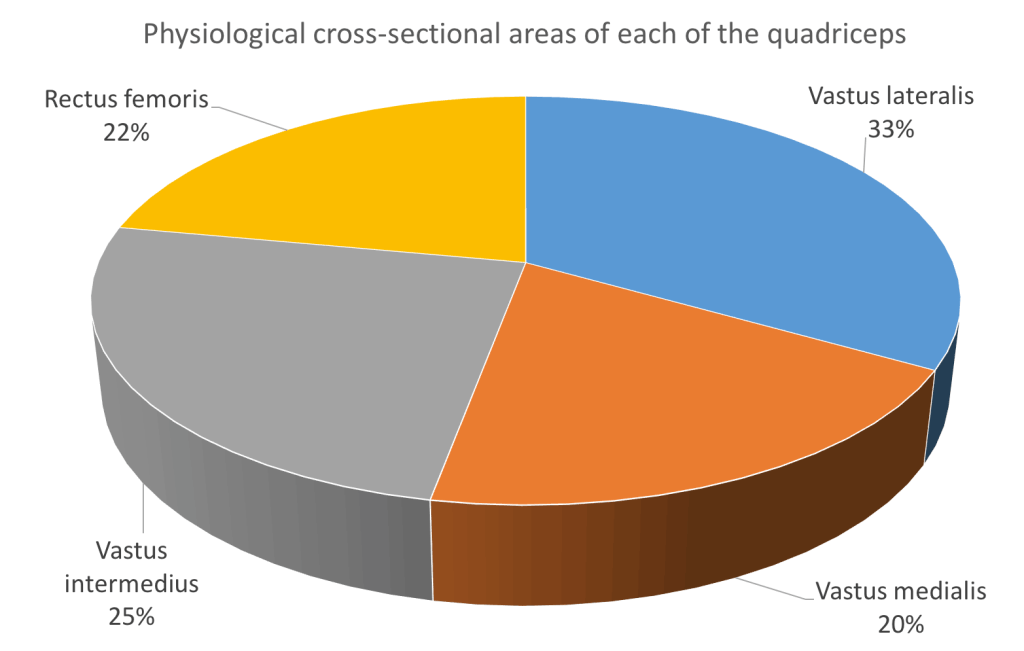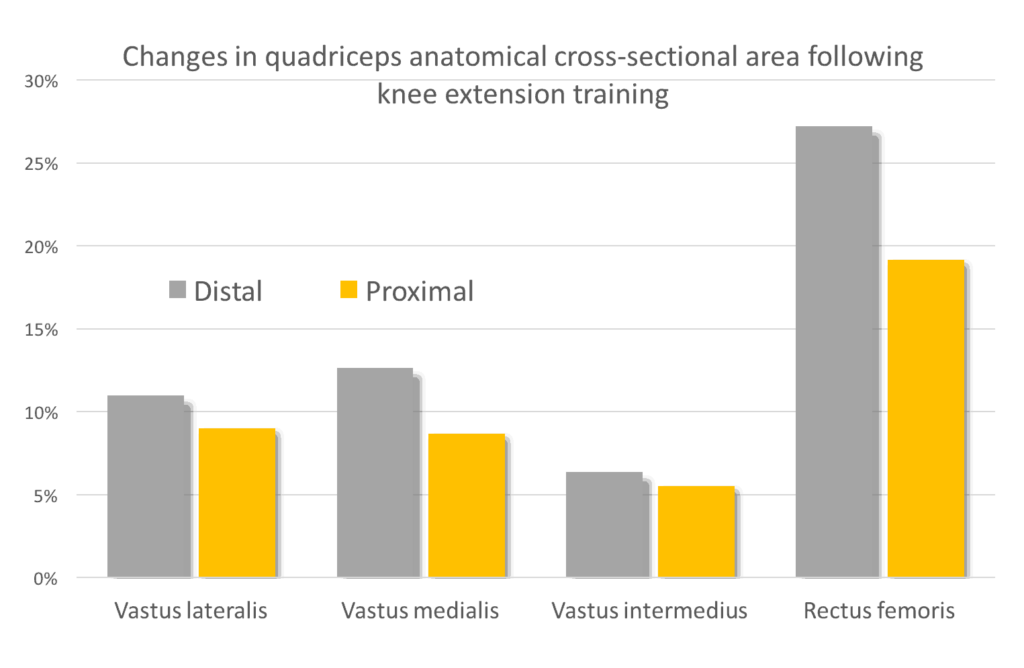Is squatting alone enough to maximise leg muscle development?
Strength & Conditioning Research contributor Chris Beardsley has decided to answer the question of many exercisers – whether it is possible to maximise thigh muscle development through barbell squats alone. The editors of Zozhnik have decided that they cannot deprive their readers of this interesting information. We give the floor to Chris.
From time to time people on the forum ask, “What’s the best way to plan a workout to develop lower body muscles?” One notorious athlete gave a short recommendation: “Just squat.” But is it really possible to achieve optimal thigh muscle development just by squatting?
What does “Just squat” mean?
If you take this phrase literally, it could mean that you only need to squat and nothing else to develop your legs.
But some people, when they say ‘Just squat’, they mean work all the muscles – except the posterior thigh group (so lower leg flexors are not excluded in this case). Sometimes this is also the recommendation of squatters who also do deadlift or gluteus maximus. In their understanding the phrase ‘just squat’ refers only to the quadriceps.
Regardless of the context put into this recommendation, I suggest we consider two questions:
- Whether squats are a good exercise for developing the posterior thigh muscles,
- Are squats effective in developing all the heads of the quadriceps muscle.
- Rear thigh muscles: “Squat, but don’t forget to do the lifting either?”
- Fitness professionals know that squats are very effective for developing the quadriceps, gluteus medius and gluteus maximus, but are ineffective for developing the posterior thigh (Wright et al 1999).
This is why a variety of deadlift variants (plus other exercises) are always included in a competent training programme to affect the posterior chain muscles (those located on the posterior surface of the body)*.
To reinforce the view that squats are ineffective in loading the muscles of the posterior surface of the thigh, the following data can be cited:
Increasing the weight on the bar in squats does not increase activation of the posterior thigh surface muscles, but significantly increases activation of the quadriceps and greater gluteus maximus (Li et al. 2013).
Lowering into a deeper squat with the same load does not increase activation of the posterior thigh surface muscles, but significantly increases activation of the quadriceps and greater gluteus maximus (Gorsuch et al. 2013; Contreras et al. 2015b).
Why are the posterior surface muscles weakly activated during the squat?
Looking at this question from a biomechanical perspective, it is likely that the weak activation of the posterior surface muscles during the squat is due to the fact that these muscles are bi-articular. They work as both hip extensors and lower leg flexors.
So, when you descend into a squat (hip flexor and shin flexor), the muscle contracts closer to the knee but extends closer to the hip joint. Roughly speaking, its length remains almost unchanged. When you come up from a squat (hip and shin extension), it’s the opposite – the muscle stretches closer to the knee, but contracts closer to the hip joint. Again – its length remains virtually unchanged. This makes the posterior surface muscles ineffective hip extensors during squats.
You might say, ‘I don’t care what the research says about lack of activation, I can feel the back of my hip working during the squat’. And of course, I’m not going to argue with that.
You really should feel the rear thigh muscles working while squatting – after all, the large adductor is also located there. This is a very large muscle which is an important hip extensor during squats. It is located next to the posterior surface muscles, so in most cases you will feel its work.
Squat and quadriceps muscle
The quadriceps is made up of four muscles located at the front surface of the thigh. Incidentally, scientists have just recently discovered a new muscle called the ‘tensor of the intermediate broad thigh muscle’ (Grob et al. 2016).
While the researchers deal with the updated anatomical nomenclature, we will recall the names of the four main muscles of the quadriceps:
- Lateral broad muscle,
- Medial broad muscle,
- Intermediate broad muscle,
- Straight muscle.
Of the four muscles of the quadriceps, all except the rectus muscle are single-jointed and their only function is to extend the lower leg. The rectus femoris is a bi-articular muscle that flexes the thigh in addition to extending the lower leg.
Now let’s look at the percentage of physiological* cross-sectional area of each quadriceps head (as you can see each of the 4 muscles makes a significant contribution to total hip volume):

Vastus lateralis – lateral wide, Vastus medialis – medial wide, Vastus intermedius – intermediate wide, Rectus femoris – straight thigh muscle.
It is logical that if you aim at maximal hip muscle development, you should make sure that the exercises used affect all 4 heads of quadriceps.
Does squatting grow the thigh rectus muscle?
Squatting has always been considered the best exercise for overall quadriceps muscle development, and this has been confirmed in studies. In 1994 (Signorile et al) studied the degree of electromyographic (EMG) activation of the lateral and medial vastus femoris during squatting and shin extension in a training machine. It was squatting that showed higher EMG activation of the muscles studied.
An experiment in 2009 (Ebben et al) showed again that squat exercises were more effective than shin extensions, deadlifts and straddle presses in terms of lateral thigh muscle development.
On the other hand, another experiment from the same year (Ebben et al.) showed that shin extensions have a higher activation of the rectus thigh muscle compared to squats.
In 2015, a very important study was conducted (Fonseca et al.) in which 2 groups of participants trained in different patterns over a long period of time. One part of the subjects only squatted, while the other part performed several exercises: squats, leg platform press, deadlift and lunges. The group who exercised with variety showed hypertrophy of all 4 quadriceps heads, including the straight thigh muscle. In those who only squatted, only the 3 single-jointed heads of the quadriceps increased in volume.

Again, the lack of straight thigh muscle hypertrophy in squatters is due to the fact that it is both a hip flexor and a tibia extensor.
As you descend into the squat (when hip and lower leg flexion occurs) the rectus muscle stretches closer to the knee, but contracts closer to the hip joint. As with the posterior thigh muscle, its length remains almost unchanged. When you move upwards from the squat (thigh and lower leg extension) the rectus muscle contracts at the knee but extends close to the hip joint. The result is the same – there is little change in length as you move. It turns out that the rectus femoris muscle is very weakly engaged during the squat.
As mentioned above, the degree of activation of the rectus femoris muscle is much higher during tibia extension in the trainer.
Apparently, if we compare the rectus muscle to the rest of the quadriceps head, it is more likely to increase in size when performing this single-joint exercise (Ema et al. 2013).
This is how the hypertrophy of the quadriceps heads occurs after systematic lower leg extensions.
Change in the anatomical cross-sectional area of the quadriceps muscles after lower leg extensions in the exerciser:

From left to right – lateral wide, medial wide, intermediate wide and straight thigh muscles.
Proximal (proximal) – located closer to the place of limb attachment to the torso (in our case it is the part of the muscle closer to the hip joint).
Distal – located further away from where the limb is attached to the torso (in our case, closer to the knee).
Apparently, the rectus femoris muscle is most active in exercises, in which there is not a simultaneous (and relatively equal in amplitude) flexion of thigh and lower leg.
Conclusions
- If you want to become stronger in squatting, then just squat.
- If you want to achieve optimum muscle development, then the squat should be supplemented with exercises for the posterior surface muscles and possibly a movement that targets the straight thigh muscle. Although many trainers ignore the shin curl in the trainer, it’s an ideal exercise for bodybuilders at least.
